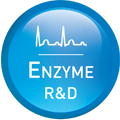Predicting the risk of metabolic acidosis for newborns based on fetal heart rate signal classification using support vector machines
Published on May 01, 2006 Source: http://ieeexplore.ieee.org/xpl/articleDetails.jsp?arnumber=1621139&filter%3DAND%28p_IS_Number%3A33956%29Cardiotocography is the main method used for fetal assessment in every day clinical practice for the last 30 years. Many attempts have been made to increase the effectiveness of the evaluation of cardiotocographic recordings and minimize the variations of their interpretation utilizing technological advances.
This research work proposes and focuses on an advanced method able to identify fetuses compromised and suspicious of developing metabolic acidosis. The core of the proposed method is the introduction of a support vector machine to "foresee" undesirable and risky situations for the fetus, based on features extracted from the fetal heart rate signal at the time and frequency domains along with some morphological features.
This method has been tested successfully on a data set of intrapartum recordings, achieving better and balanced overall performance compared to other classification methods, constituting, therefore, a promising new automatic methodology for the prediction of metabolic acidosis.
Previous article Next article

